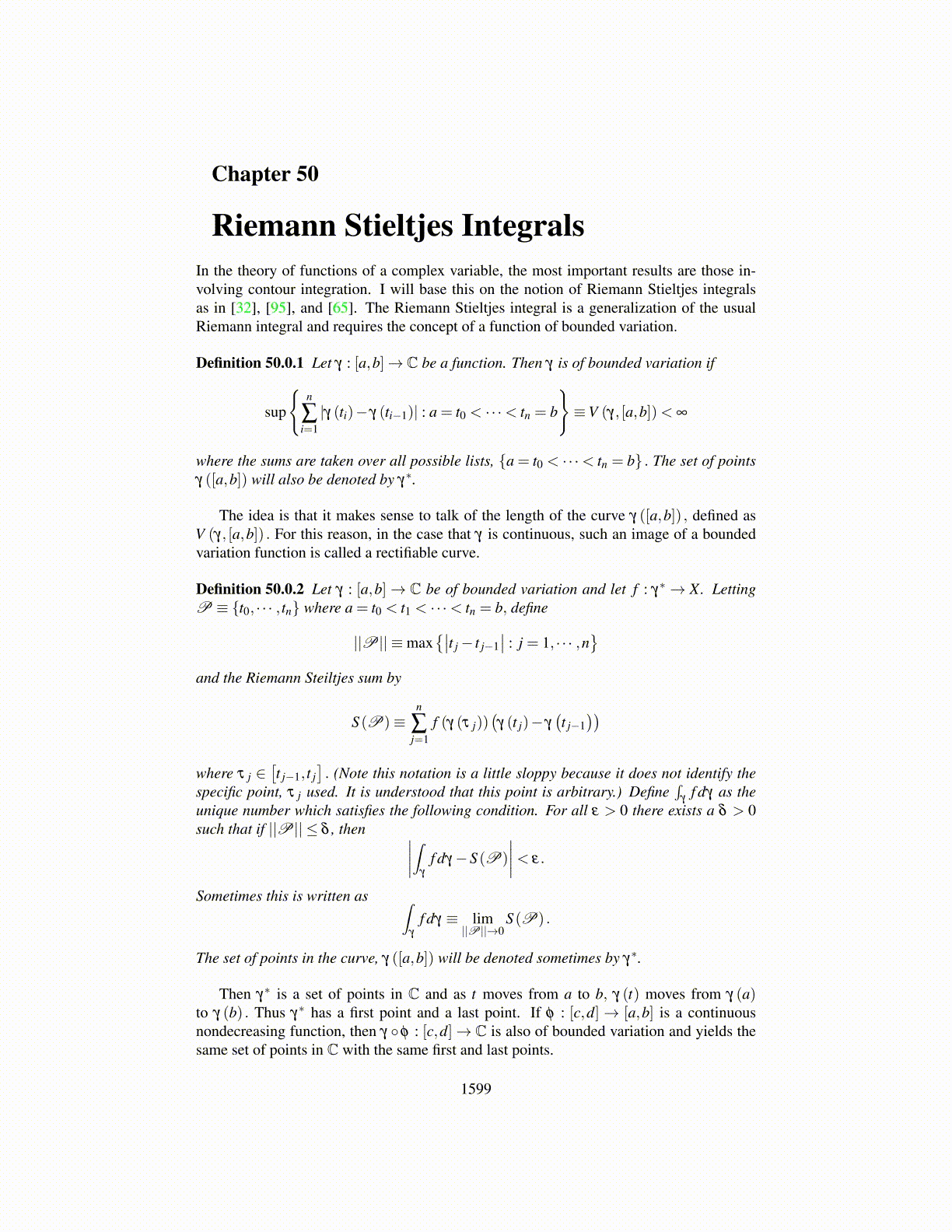
49.1. THE EXTENDED COMPLEX PLANE 1599
which is just the usual norm in R2 identifying (x,y) with x+ iy. Therefore, C is a completemetric space topologically like R2 and so the Heine Borel theorem that compact sets arethose which are closed and bounded is valid. Thus, as far as topology is concerned, thereis nothing new about C.
The extended complex plane, denoted by Ĉ , consists of the complex plane, C alongwith another point not in C known as ∞. For example, ∞ could be any point in R3 withnonzero third component. A sequence of complex numbers, zn, converges to ∞ if, when-ever K is a compact set in C, there exists a number, N such that for all n > N, zn /∈ K.Since compact sets in C are closed and bounded, this is equivalent to saying that for allR > 0, there exists N such that if n > N, then zn /∈ B(0,R) which is the same as sayinglimn→∞ |zn|= ∞ where this last symbol has the same meaning as it does in calculus.
A geometric way of understanding this in terms of more familiar objects involves aconcept known as the Riemann sphere.
Consider the unit sphere, S2 given by (z−1)2 + y2 + x2 = 1. Define a map from thecomplex plane to the surface of this sphere as follows. Extend a line from the point, p inthe complex plane to the point (0,0,2) on the top of this sphere and let θ (p) denote thepoint of this sphere which the line intersects. Define θ (∞)≡ (0,0,2).
(0,0,2)
(0,0,1)p
θ(p)
C
Then θ−1 is sometimes called sterographic projection. The mapping θ is clearly con-
tinuous because it takes converging sequences, to converging sequences. Furthermore, it isclear that θ
−1 is also continuous. In terms of the extended complex plane, Ĉ, a sequence,zn converges to ∞ if and only if θzn converges to (0,0,2) and a sequence, zn converges toz ∈ C if and only if θ (zn)→ θ (z) .
In fact this makes it easy to define a metric on Ĉ.
Definition 49.1.1 Let z,w∈ Ĉ including possibly w = ∞. Then let d (x,w)≡ |θ (z)−θ (w)|where this last distance is the usual distance measured in R3.
Theorem 49.1.2(Ĉ,d
)is a compact, hence complete metric space.
Proof: Suppose {zn} is a sequence in Ĉ. This means {θ (zn)} is a sequence in S2
which is compact. Therefore, there exists a subsequence,{
θznk
}and a point, z ∈ S2 such
that θznk → θz in S2 which implies immediately that d(znk ,z
)→ 0. A compact metric
space must be complete.